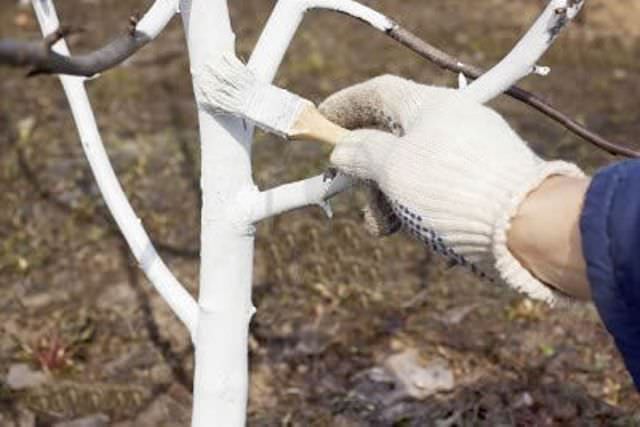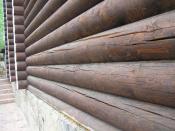Search
Login
Recommended
How to plant a tree
Landscaping the site, we learned a lot: to grow flowers, care for fruit trees and the garden.
Content
- How to plant a tree video
- Whitewashing trees
- Plant nutrition and nutrition
- Potassium deficiency in vegetable and fruit crops
- Phosphorus deficiency
- Nitrogen deficiency in plants
How to plant a tree
Before planting a seedling of an apple, pear or shrub, it is necessary to dig a planting hole of the correct size, namely: pears, apple trees - 1 meter deep, 1-1.5 meter wide, stone fruit: cherry, apricot, sweet cherry, plum - 0.7 meter deep , width 1 meter, shrubs: raspberries, gooseberries, currants - depth 0.5 meters, width 0.5 meters.
When digging a hole, do not forget to save the upper fertile layer separately, using it later on to prepare the soil composition for seedlings.
If you have sandy loam soil, then the composition is prepared as follows: for four buckets of your loamy sand we take: one bucket of clay, one bucket of humus, one bucket of chernozem and four glasses of ash.
The composition of the soil for black soil: for every five buckets of land we take one bucket of rotted manure, three glasses of ash and one bucket of sand.
Repeat these batches as many times as necessary.

All mix well and add superphosphate at the rate of 0.5 kg. on one tree, (0.2-0.3 kg) on \u200b\u200bone shrub, seedlings are pre-soaked in water for 1-2 hours.
Before planting, a knoll is made from the ground in a pit, a stake is driven in, the roots of a seedling are spread on a knoll. After that, they fill the pit with earth, pulling the seedling up and slightly tamping the ground. Pour two buckets of water, mulch with a ten-centimeter layer of peat or manure, whiten the tree, water it daily for the first year.
Whitewashing trees
Whitewashing is done twice a year - in spring and autumn at a temperature of at least +5 degrees. The tree must whiten the entire trunk and skeletal branches as high as possible.
Safety precautions: when preparing the solution, it is necessary to wear glasses and a protective bandage on the respiratory system, wear gloves on your hands.
Whitewash recipe for trees with intact (regular) bark: 3 kg. add quicklime to 5 liters of water and leave for 5-6 hours so that the lime is extinguished.
Then, add 2 kg. clay, 2 kg. fresh manure, 2 liters of skim milk or 100 grams of casein glue soaked overnight and 100 gr. sulphate dissolved in 1 liter of boiling water. Adjust the density of the solution with water.

Treatment of damaged (cracked) bark: Using a knife, carefully clean the dead bark to healthy tissue. Disinfect the wound with sorrel up to 3 times with an interval of 30 minutes or with 1% solution of copper sulfate, or 5% solution of iron sulfate. Then bring a mixture of 1 part clay, 1 part mullein and 100 g. sulphate dissolved in 1 liter of boiling water. And with this mixture to cover the wound. Dip the wet burlap in the remaining solution and bandage the wound. Over the summer, the dressing is changed 3-4 times.
Plant nutrition and nutrition
what are macronutrients
No plant can grow and develop without: carbon, oxygen, hydrogen, nitrogen, phosphorus, potassium, calcium, sulfur and magnesium.

The above listed elements are absorbed by plants in significant quantities. They are called macrocells.
what are trace elements
Other elements necessary for plants in very small quantities, but nevertheless have an important influence on their development. This: iron, boron, manganese, copper, zinc, etc., they are called trace elements. Each plant consumes its own amount of macro and trace elements.
Who what love
Conventionally, all plants can be divided into three groups:
1. nitrogen-loving - this group includes eggplant, zucchini, sorrel, raspberries, cherries.
2. phosphorus-loving - watermelon, cucumber, tomato, dill, blackcurrant.
3. potassium-loving - peas, melon, cabbage, potatoes, pear, cherries, gooseberries, plums, red currants, apple trees.
With this in mind, without going into the calculation, we apply fertilizers according to the season, namely: nitrogen in the spring, maximum in June, phosphorus and phosphorus-potash, starting from the month of July, within reasonable limits, following the instructions printed on this fertilizer.
Potassium deficiency in vegetable and fruit crops
On potassium-poor soils, white and cauliflower grow wrinkled and wavy leaves, with a strong lack of potassium, small and loose heads form. In tomatoes, young leaves are wrinkled, covered with small specks that form a continuous border around the edges, the edges of the leaves turn brown.

Lack of potassium in carrots leads to curliness of young leaves, root beetroots wilt in red beets. Cucumbers, with potassium deficiencies, acquire a pear-shaped shape, the edges of the leaves become bronze and die off.
Onions exhibit a lack of potassium, changing the color of the leaves, they become grayish-yellow and fade. In fruit on the shoots of the current year, mottling of leaves develops. The leaves are usually shriveled, and the shoots are thin. In the apple tree, the edge of the leaf turns brown, the fruits are smaller, the drying of individual branches is observed. At cherry leaves are folded up along the main vein. The black currant internodes are short, the shoots lose their elasticity. The leaves acquire a reddish-purple hue, the berries ripen unevenly.
Potassium deficiency measures. It is necessary to make one of the potash fertilizers at the rate of 10 grams per square meter, it is better to make in dissolved form. It is good to add wood ash at 200-250 grams per square meter.
Phosphorus deficiency
In potatoes, the leaves become dark green, the growth of the bush is greatly weakened, flowering is delayed for 3-5 days, a narrow strip of dark brown color appears on the tips of the lower leaves.
In white cabbage, growth is very weakened, the leaves are dull, with a strong purple hue, the head of cabbage is set late. In tomatoes, the stems become thin, weak.
Leaves are drooping, with lobes wrapped at the edges, flowering is late, the fruits are small. In fruit plants in the spring, there is a delay in the budding of the buds.
Young leaves are dark green in color, and old ones are bronze. In the apple tree short, thin shoots are formed, the leaves are sparse, small. Premature fall of foliage occurs. Raspberries have poor shoot growth.

Phosphorus Deficiency Measures. It is recommended to apply one of the phosphorus fertilizers, at the rate of 6-8 grams per square meter, fertilizers are best applied in dissolved form at the rate of 10 liters per 1 square meter. You can spend two, three non-root dressings, for example, an aquarium.
Nitrogen deficiency in plants
In white and cauliflower, the leaves dry out early, and a small head of cabbage is formed. In tomatoes, the leaves become small, and the veins acquire a bluish-red hue.
The fruits are small, woody.
Cucumbers slow down growth, lower leaves lose color, fruits are small and of poor quality. In fruit crops, nitrogen deprivation is manifested on older leaves of the shoots of the current year.
The leaves of the apple, pear, cherry and plum are smaller, turn red or purple, fall off early.
On the tree, few fruit buds and flowers are planted. Blackcurrant leaves are small, pale green in color, the bush blooms poorly and forms few berries.

Nitrogen deficiency measures. It is recommended to apply one of the nitrogen fertilizers at the rate of 8-10 grams per 1 square meter, it is better to apply in dissolved form, combining with watering at the rate of 10 liters per 1 square meter.





